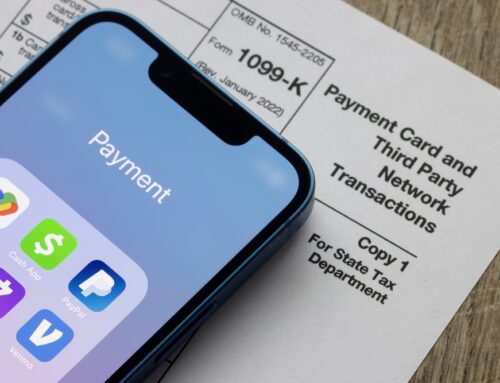Managing your books may seem like a tedious task but recording your financial transactions on a consistent basis will offer more rewards in return when tax time rolls around.
Most importantly, it keys you into the profitability of your business and helps you make critical management decisions as your business progresses.
Beyond that, you need to know your net profit in order to file your taxes (or to have your CPA do so for you). And in order to that, you’ll need up-to-date books tracking your total income and expenses.
Many other accounting firms want to pigeonhole you into their own bookkeeping process, but at Wych Tax, we make sure our process is tailormade to your exact needs — either through consulting and training to do it yourself or having one of our professionals manage it for you.
As a starting guide, we’ve outlined the four most important pieces to the bookkeeping puzzle that business owners need to be aware of.
1. Understanding the chart of accounts
A chart of accounts (COA) is essentially the means by which you are able to record transactions, making it easier to determine the overall financial health of your business. It functions like an index.
A general ledger is the detailed breakdown of all transactions recorded in your COA (i.e., advertising expenses, bank fees, etc.).
The balance sheet (assets, liabilities, and equity), and the income statement (revenues and expenses) are a byproduct of recording transactions in your COA.
- The balance sheet is a financial statement that summarizes your general ledger at a specific point in time (e.g., December 1, 2020)
- The income statement summarizes your profit and losses over a period of time (e.g., Q4)
Subcategories of the assets account may consist of things like cash, savings, accounts receivable, and inventory. Liabilities can include accounts payable, payroll liabilities, and the company credit card.
The chart of accounts and its categories should remain the same each year in order to compare profitability and provide a thorough outlook on the financial health of your business. That said, many business owners have a tendency to create too many accounts in their general ledger.
For example, if you spend the majority of your advertising budget on newspaper ads, but decide to do a one-off social media ad, will recording that singular ad in its own category allow you to make critical management decisions? It is more likely that including it in your overall ad spend will give you a more holistic view and allow you to make better-informed business decisions.
2. Cash versus accrual accounting
When organizing your books, an important step is deciding whether you’ll use a cash or accrual accounting method. The main difference between the two is the time at which revenues and expenses are recorded.
With cash accounting, expenses and revenues are recorded when cash exchanges hands. For example, if you are charging a client for services, the transaction is recorded when you receive the money.
Accrual accounting involves recording revenues when they are earned and expenses when they are incurred. If you send an invoice and your client will not be paying you for another 30 days, the transaction is recorded under the accounts receivable category.
So, which method is best for your business?
Some small businesses prefer cash accounting because it is more simplistic, easy to maintain, and allows you to track how much cash you have on hand at any given time. However, this usually provides an inaccurate picture of how profitable your business actually is if you have any accounts payable.
Accrual accounting is the best way to manage your business because it matches the revenues that you earn with the expenses you incur to generate that revenue. It allows you to track your income and expenses over a period of time and gives you a more accurate picture of the long-term profitability of your business.
3. How the general ledger functions with double-entry accounting
The basis of bookkeeping is double-entry accounting. An entry is made for each transaction that has a debit and a credit. Say you purchase food and/or supplies for your restaurant for $1,000 in cash. You are now out the cash you paid to the supplier and you have gained the supplies for your business. Below is an example of how this entry would appear:
| Date | Account | Debit | Credit |
| Oct 1 | Supply expenses | $1,000 | |
| Accounts payable | $1,000 |
Double-entry bookkeeping has been around since commerce began moving back and forth between people — think all the way back to the ancient Greeks. It is the backbone of accounting. This system provides a holistic view of the financial health of your business and allows you to keep track of all transactions within the general ledger, giving you the ability to make critical management decisions over the long-term.
4. Debits and credits
Let’s take a little deeper dive into how debits and credits work within your general ledger.
Each account (assets, liabilities, equity, revenue, and expenses) is marked as a debit or credit depending on whether the transaction causes an increase or decrease in value. Whether you debit or credit a certain account is shown in the table below:
| Increase | Decrease | |
| Assets | Debit | Credit |
| Liabilities | Credit | Debit |
| Equity | Credit | Debit |
| Revenue | Credit | Debit |
| Expenses | Debit | Credit |
These debits and credits are essential to balancing all of your accounts over a time period, and especially when tax time rolls around.
The big picture
We understand bookkeeping can sometimes be overwhelming. While this serves as a general guide to outline the basics, perhaps you have lingering questions about what is best for your business.
At Wych Tax we are committed to helping you create a bookkeeping process that is completely unique and personalized to your needs. Whether you need a consultant to help you get started, or you’d like a professional to take it on for you, we’re here to help.
Get in touch with us today by calling 970-223-0792 or by visiting our website and ask us about a free consultation.






